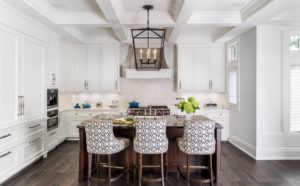
Choose the Correct Color Palette
Use soothing colors. Your goal should be to create a room that feels like a respite from your hectic, everyday life. The key words in a transitional style are clean and serene. As usual, you want to start with a neutral base. Choose soft grays over harsh blacks and warm tans rather than harsher, deep browns. If neutral shades are your favorite, go ahead and use them for both dominant and secondary colors. You should have some pop colors, too. Blues, in particular, are a great option because color psychology has shown all tones of blue have calming connotations. Soft shades of green and purple also work nicely.
Choose Comfortable Furniture
Furniture plays a central role in your design, the pieces are larger and take up a commanding presence. You will build your room around those large pieces. Choose pieces that exemplify the clean lines in contemporary design. The furniture should be plush enough to make the room feel cozy and welcoming. Create groupings to facilitate conversation. Leave space so your pieces become the room’s focal point.

Contact us (859-331-8100) today to make an appointment!
—
Quality Cabinet and Hardware Suppliers
We are aligned with the top cabinet, appliance, hardware, and countertop suppliers in the world.
Our Process
Our Designers
Our award winning designers collaboratively work together to create the perfect space for you.
>> View our designers